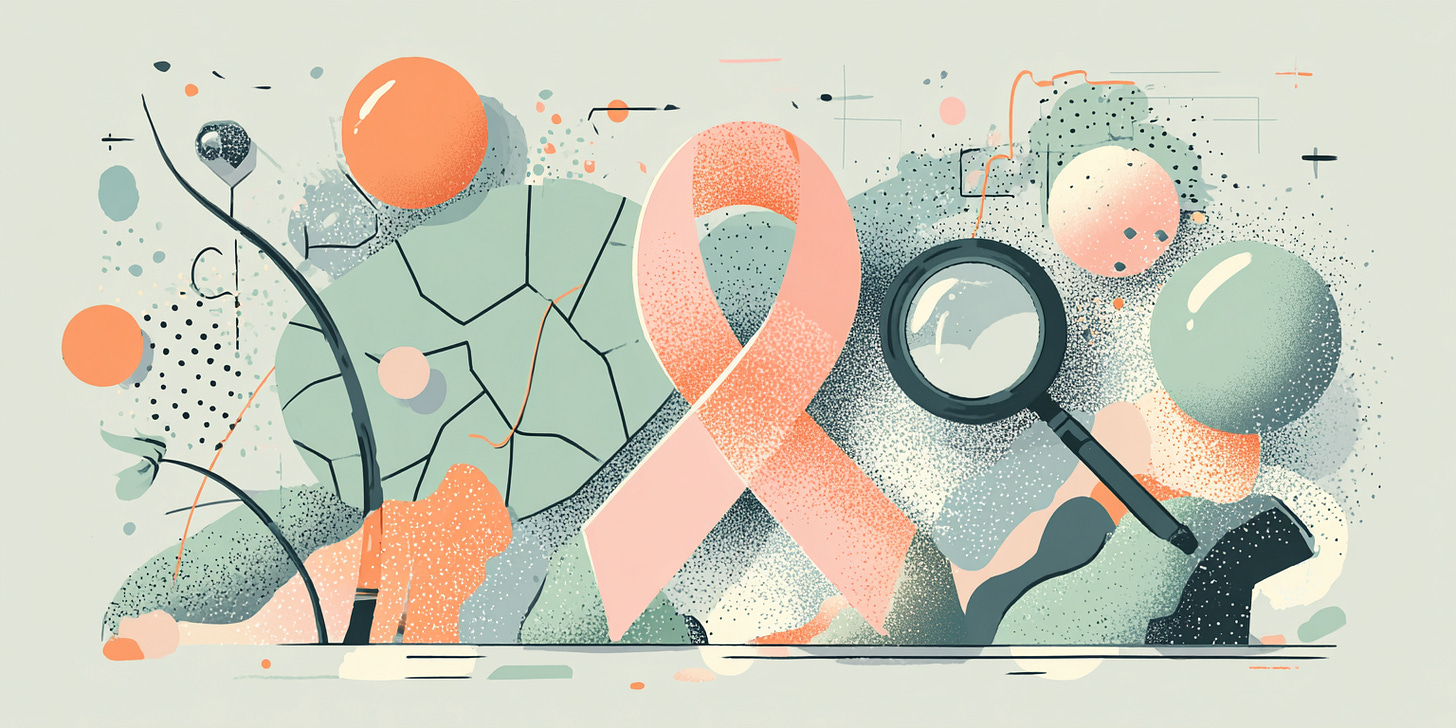17 Cancer Myths Busted By Science—What Most People Get Wrong
Science vs. cancer myths: 17 claims you shouldn’t trust
Cancer Numbers Are Growing
Cancer accounts for 1 in 8 deaths worldwide1.
After years of being the second leading cause of mortality2,3, it has risen to the top spot in several regions4,5, and it is estimated that by the end of this century, it will be the leading cause of death in all countries6.
Cardiovascular diseases are the leading cause, I highly recommend reading this post too.
About 1 in 5 men and 1 in 6 women will develop cancer at some point in their lives, and 1 in 8 men and 1 in 11 women will die from it.
The most common types of cancer vary by gender7:
In women: breast, lung, and colorectal cancer are predominant.
In men: lung, prostate, and colorectal cancer lead the statistics.
What is Cancer? A Simple Explanation
Imagine your body as a magnificent city: a beautiful, busy, organized, and functioning city. It is composed of trillions of units called cells. Each cell is a very specialized brick of this city.
Each of these "brick-cells" has a function, and they work together. When old "brick-cells" become worn out, or parts of the city need a repair, these "brick-cells" will know exactly when to divide and how to create new, identical "brick-cells" in each case.
It works like a project that gets managed somehow and brings new bricks in: every piece is made of a brick, it knows exactly when and where to add bricks.
However, once in a while, one of these "brick-cells" goes awry. It stops following the rules of the city as a whole, and it doesn't just divide when permitted. This "brick-cell" goes through cell division over and over, creating more and more "brick-cells" without permission. This disorganized pile of "brick-cells" is a lump, mass, or a tumor.
Tumors are not always cancerous:
Benign tumors act more like an organized pile of bricks, usually staying intact and not causing any real trouble.
Cancerous tumors are malignant, and they are truly dangerous.
Malignant “brick-cells” also have the ability to break away and spread. The rebel "brick-cells" have the ability to travel across the city through roadways (bloodstream) or sewers (lymphatic system) and will form their own disordered pile in a new neighborhood. This is metastasis, and why cancer is a difficult disease to manage.
Essentially, cancer is a disease of a subset of your own body's "brick-cells" growing out of control by ignoring all the normal signals to grow and divide, and ultimately spreading, and invading somewhere else in your body, making the regional normal function(s) abnormal.
Cancer Myths
Cancer is a word that often stirs fear and uncertainty, and understandably so.
However, amidst this fear, a wealth of misinformation has emerged, clouding our understanding of the disease.
Myths about cancer not only mislead but can also prevent people from taking effective measures to reduce their risk or seek timely treatment.
By shedding light on these myths, I aim to empower you with accurate, evidence-based knowledge.
In this week’s post, you’ll discover:
The 17 most common cancer myths, fully debunked.
Clear, practical explanations based on official public health institutions and current scientific research.
A downloadable, printable guide you can keep on hand anytime, and easily share with those you care about.
Let’s tackle the most common misconceptions about cancer, separating fact from fiction.



